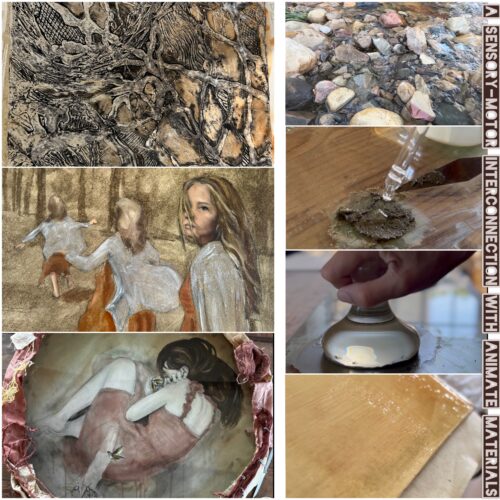
Nature as a source of inspiration
Many artists and designers have been inspired by nature. In this blog post I will share a few contemporary textile creatives with you whose source of inspiration and material comes from nature and who then translate it into fascinating pieces.
Japanese artist Kazuhito Takadoi, frames nature in a minimalistic and contemporary setting. His work is 100% natural, simply dried then woven, stitched or tied, no added colours. Inspired by the woodland surrounding his birthplace of Nagoya in Japan, he grows and hand picks grasses, leaves and twigs from his garden, sowing each blade through the paper. As the grasses dry and mature they embark on a subtle colour shift, comparative to seasonal change. He combines the formality of Eastern discipline with abstraction from Western art.

Fashion designer Suzanne Lee, will only need a couple of bathtubs, some yeast, a pinch of bacteria, and several cups of sweetened green tea to create incredible textiles. Her experiment consists on growing garments from the same microbes that ferment the tasty caffeinated beverage.

From this microbial substance, the fibres begin to propagate, eventually resulting in thin, wet sheets of bacterial cellulose that she later molds to fashion pieces. As the sheets dry out, overlapping edges “felt” together to become fused seams. When all moisture evaporates, the fibres develop into a papyrus-like surface that can be bleached or stained with fruit and vegetable dyes such as turmeric, indigo, and beetroot.


Spanish designer Carmen Hijosa, is the founder of Piñatex, a non-woven material made from the fibres found in pineapple leaves. Based on the agricultural by-product of pineapples, produced in abundance across the Philippines, the project represents a major advance in sustainable textiles. Once de-gummed, the fibres become soft to the touch and breathable. They are then industrially processed into a non-woven mesh textile at a local factory in the Philippines. To date, the sustainable textiles market has focused on less environmentally damaging production such as organic cotton, or less agriculturally demanding fibres such as hemp or flax.



For British sculptor Andy Goldsworthy, photography and environment are the base to produce site-specific sculpture and land art. He situates his art pieces in natural and urban settings, particularly in Scotland. The materials used in his art often include brightly coloured flowers, icicles, leaves, mud, pinecones, snow, stone, twigs, and thorns. Photography plays a crucial role in his art due to its often ephemeral and transient state. His work grows, stays, decays.







